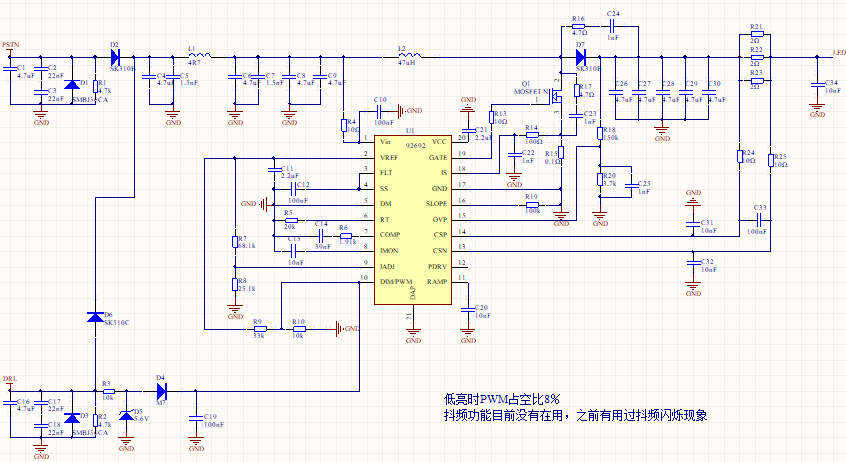Input:DC 6-16V Output:LED*12S/0.3A
F(PWN Dimming)=200hz
Issue:The Led lights flashing occurrence when remove the dimming FET and PWM duty cycle is about 8% .The PDRV pin is floating and the function of spread Spectrum Frequency Modulation isn’t used in the design. Could you help check if the dimming FET can removed or not when the PWM duty cycle is very low
SCH is as below:

